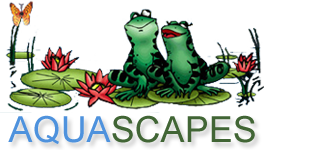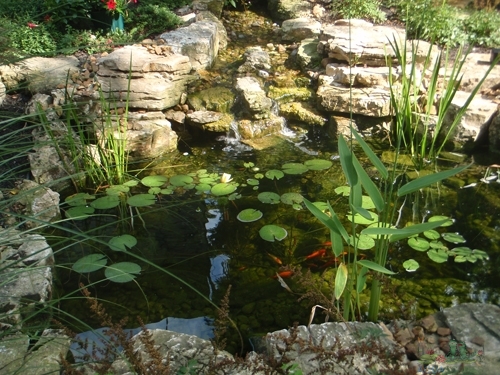Fall Pond Maintenance: How to Prepare Your Pond for Cooler Weather
As the vibrant colors of summer fade and the crisp air of autumn arrives, pond owners must turn their attention to preparing their ponds for the colder months ahead. Fall is a critical time for pond maintenance, as it’s the season when your pond undergoes significant transitions, and preparing it properly ensures a smooth transition into winter.
In this detailed guide, we will cover everything you need to know about fall pond maintenance, from cleaning up fallen leaves to ensuring proper aeration and installing pond netting. By following these essential steps, you can protect your pond, its ecosystem, and your equipment during the cooler months.
Why Fall Pond Maintenance is Crucial
Fall maintenance is essential for keeping your pond healthy as the seasons change. The biggest challenge during autumn is managing the debris, such as leaves and organic matter, that can accumulate in your pond. If not properly managed, these materials will break down and contribute to excess nutrients in the water, leading to water quality issues and increasing the risk of algae blooms in the spring.
By taking the time to maintain your pond in the fall, you’ll not only keep it clean during the cooler months but also give it a strong foundation for the following year.
Key Tasks for Fall Pond Maintenance
1. Remove Debris: Leaves, Sticks, and Plant Matter
One of the biggest challenges in fall is dealing with falling leaves and plant debris. If left unchecked, these materials will decompose and release nutrients into the water, promoting algae growth and creating murky, poor-quality water.
- Skim Leaves Regularly: Use a pond skimmer net or pond vacuum to regularly remove fallen leaves, sticks, and other debris from the surface of the water.
- Remove Dead Aquatic Plants: Trim back any dead or dying aquatic plants and remove them from the pond to prevent them from decomposing and releasing organic matter into the water.
- Use a Pond Vacuum: For deeper ponds, a pond vacuum can be especially useful for removing debris from the bottom.
Pro Tip: Install Pond Netting during Fall Pond Maintenance Season
One of the easiest ways to keep debris out of your pond is to install pond netting. Stretching a net over your pond prevents leaves and other debris from sinking to the bottom and breaking down. A properly installed pond net can save you hours of maintenance work and help protect your pond from excessive nutrient build-up.
- How to Install Pond Netting: Choose netting with fine mesh to catch small leaves. Secure it around the edges of your pond with stakes or rocks. Make sure it’s taut enough to prevent leaves from weighing it down into the water.
2. Check and Maintain Your Pond Pump through Pond Fall Maintenance Yearly!
Your pond pump plays a crucial role in maintaining water circulation and oxygenation, which helps prevent stagnation and keeps your pond’s ecosystem healthy. During the fall, it’s important to perform regular checks and maintenance to ensure your pump continues functioning properly throughout the cooler months.
- Inspect the Pump: Check for any blockages or damage to the pump, such as clogged filters or debris stuck in the impeller. Clean any parts as necessary.
- Consider Reducing Flow: In colder climates, you may want to reduce the pump’s flow as temperatures drop to prevent the water from cooling too quickly. Some pond owners choose to turn off their pump completely during freezing conditions.
- Switch to a Submersible Pump: If you have an external pump, consider switching to a submersible pump for better protection against freezing.
3. Aeration: Keep the Water Oxygenated
Proper aeration is critical for maintaining a healthy pond, especially in the fall as temperatures begin to drop and organic matter starts to accumulate. Fall pond maintenance is important when it comes to keeping O2 in the water. Aeration ensures that oxygen is distributed evenly throughout the pond, preventing the water from becoming stagnant and supporting fish and beneficial bacteria.
- Why Aeration is Important: As leaves and other organic matter decay, they consume oxygen, potentially leading to oxygen depletion, which can harm fish and plants. Aerators help maintain adequate oxygen levels in the pond, preventing winter fish kills and keeping beneficial bacteria active.
- Types of Pond Aerators: There are several types of aeration systems to choose from, including floating fountains, air pumps, and diffused aeration systems.
- Air Pumps: These are easy to install and provide excellent aeration by forcing air through a diffuser placed at the bottom of the pond. Air bubbles rise to the surface, circulating and oxygenating the water.
- Floating Fountains: In addition to providing aeration, floating fountains create an attractive visual display. They’re best suited for larger ponds.
- Diffused Aeration: This system works by diffusing air bubbles through tubing placed at the pond’s bottom. It’s effective at oxygenating deeper ponds and keeping water moving.
Pro Tip: Don’t Let the Pond Freeze Completely
In colder climates, it’s crucial to prevent your pond from freezing over completely. If ice forms across the entire surface, it can trap harmful gases in the water and reduce oxygen levels, endangering fish and other aquatic life. Use a pond heater or de-icer to keep a small section of the pond ice-free for proper gas exchange.
4. Adjust Fish Feeding Habits
As temperatures cool down in the fall, the metabolism of pond fish slows, meaning they require less food. Overfeeding fish in cold weather can lead to uneaten food decaying in the water, which negatively impacts water quality. Always double check during your fall pond maintenance and ensure your pets are healthy.
- Switch to Cold-Weather Fish Food: Use a specially formulated cold-weather fish food that is easier for fish to digest. These foods contain a higher concentration of wheat germ, which aids digestion as temperatures drop.
- Feed Less Frequently: Begin reducing the amount of food you give your fish as the water temperature drops below 50°F (10°C). Fish will become less active and won’t need as much food. Once the water temperature drops below 40°F (4°C), you should stop feeding them altogether.
Pro Tip: Monitor Fish Health – This is an important point during your fall pond maintenance!
Observe your fish for any signs of stress or illness. Cooler water can sometimes make fish more vulnerable to disease. If you notice any unusual behavior or symptoms, such as lethargy or unusual spots, consult a pond specialist to address any potential issues.
5. Check and Clean Filters and Skimmers
Filters and skimmers are essential components of any pond’s filtration system. In the fall, these devices can become clogged with fallen leaves and other debris, reducing their effectiveness and potentially causing equipment damage.
- Clean Mechanical Filters: Mechanical filters trap debris and should be cleaned regularly to prevent clogs. Remove the filter media and rinse it with pond water to preserve beneficial bacteria.
- Empty Skimmer Baskets: If your pond has a skimmer, check and empty the skimmer basket frequently to remove leaves and other debris. This will help maintain proper water flow and reduce the load on your filtration system.
Pro Tip: Consider Upgrading to a Pressurized Filter System
For pond owners looking to simplify maintenance, upgrading to a pressurized filtration system can be beneficial. These systems can handle higher volumes of debris and provide better filtration, ensuring clearer water even as organic matter accumulates in the fall.
6. Prune and Divide Aquatic Plants
As autumn progresses, many pond plants will begin to die back or go dormant. It’s essential to prune and manage these plants to prevent them from decomposing in the water and contributing to nutrient build-up.
- Cut Back Dead Foliage: Trim back the dead or dying foliage from aquatic plants like water lilies, cattails, and irises. Remove any floating debris that falls into the water.
- Divide Overgrown Plants: If your aquatic plants have become overgrown, fall is a good time to divide them. This will encourage healthy growth in the spring and prevent them from overcrowding the pond.
7. Seasonal Water Treatments (Fall Pond Maintenance Yearly Application)
As part of your fall pond maintenance routine, consider using seasonal water treatments to keep your pond clean and healthy throughout the cooler months.
- Beneficial Bacteria: Adding beneficial bacteria to your pond helps break down organic matter and reduces sludge buildup. These bacteria thrive in cooler temperatures and continue working even as the water cools.
- Pond Enzymes: Enzyme treatments help accelerate the breakdown of organic material in the pond, reducing the need for manual cleaning.
- Algae Control Products: If algae has been an issue during the summer, fall is a good time to add an algaecide or barley straw extract to prevent lingering algae from taking hold.
Pro Tip: Follow Manufacturer Instructions before Fall Pond Maintenance!
When using any pond treatments, be sure to follow the manufacturer’s instructions carefully. Overdosing treatments can have unintended side effects on water quality and the health of your fish and plants.
8. Winterizing Your Pond Equipment
Before winter arrives, it’s important to prepare your pond equipment for the colder months to prevent damage from freezing temperatures.
- Remove and Store Pond Pumps: In regions where freezing temperatures are common, it’s a good idea to remove external pumps and store them indoors to prevent freezing damage.
- Winterize Pond Filters: Clean your pond filter thoroughly before storing it for winter. For submersible filters, you may want to leave them in the pond if they are rated for winter use.
- Check UV Clarifiers: If your pond uses a UV clarifier to control algae, fall is a good time to clean or replace the UV bulb. Most UV clarifiers should be turned off and stored indoors during winter to prevent freezing.
Additional Fall Pond Maintenance Tips
1. Monitor Water Levels
Keep an eye on your pond’s water levels during the fall, as evaporation and leaf accumulation can cause fluctuations. If the water level drops significantly, it can strain your pump and filtration system. Top off the pond with dechlorinated water as needed to maintain the proper level.
2. Test Water Quality
Regular water testing is crucial during the fall to ensure your pond’s pH, ammonia, and nitrate levels are within safe ranges. You can purchase water test kits to monitor these parameters at home. Maintaining balanced water quality during the fall helps prevent issues from arising when the weather turns colder.
A Healthy Pond Through Every Season
By following these fall pond maintenance tips, you can ensure your pond remains healthy, balanced, and visually appealing as it transitions into winter. From installing pond netting and maintaining aeration to adjusting fish feeding habits and cleaning filtration systems, every step you take during the fall will pay off when spring arrives.
Proactive maintenance now will save you time, money, and stress, ensuring your pond continues to be a relaxing focal point in your outdoor space all year long.
Check out our store for all your water gardening needs! Aquascape products are Aquascape Inc. Certified.
Thanks for reading at Meyer Aquascapes! We hope you’ve enjoyed our post on Fall Pond Maintenance. Please leave a comment below if you liked it or have any questions. We’d love to hear from you! Thanks for stopping by!


 Meyer Aquascapes
Meyer Aquascapes